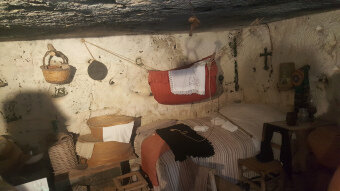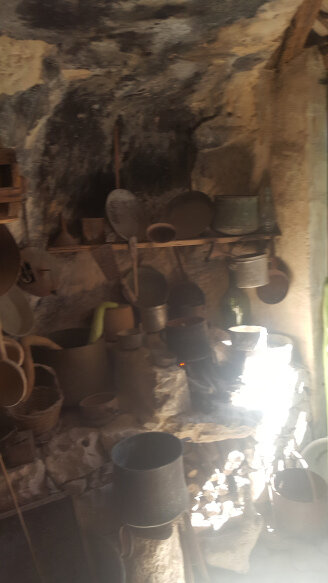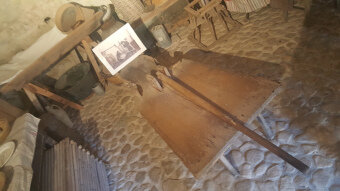Hooped Dresses & Watermills
Ciao Tutti!!
I feel as if I am continually repeating myself when I say that we rode through some very beautiful countryside today. Such repetition not only lacks an imaginative start but calls my credibility into question. Unfortunately, I feel compelled to say, yet again, We rode through some beautiful countryside today. I fear that my shortcomings as a photographer prevent me from capturing the beauty of what I am seeing.
As I began my ride, I rode alongside a river. I stopped for a moment to watch the sun shining on the water. I stood there listening to the quiet. Occasionally, off in the distance, I could hear the singing of birds. The breeze that cooled me had a fragrance of the forest that sat between me and the water below. It was a moment of solitude, a moment of peace. I am not a good enough photographer to capture that feeling in a picture; I am not even sure if I have captured it in these words.
As we pressed on to Scicli we passed the archaeological site of Cava d’Ispica (Cave of Ispica). It is a site made up of caves that were carved into the rock formations of the valley. People had lived in these caves for thousands of years, from a time prior to Greek colonization down to the early twentieth century. As we rode past, I wondered what it must have been like to live in a cave. Later, when we stopped at a flour mill, all my questions were answered.
The mill, which was the last working watermill in Sicily, is cut into the side of a hill with the living quarters adjacent to the working area. The cave, for lack of a better word, was one large hollowed out area. In one corner of the room was the bed. Above the bed swung a kind of hammock that served as a crib for the baby, the logic being that if the baby should fall from the hammock he or she would land on the bed. Food, such as bread, was stored in a cane box that allowed air to pass through but kept it out of the reach of vermin. The stove was near the opening of the cave. Since there was no real chimney the smoke would escape through the cave entrance.
In the center of the room was a tool for the kneading of dough that was rather interesting. It was a short-legged table with a little seat as an extension to allow a person to sit. In front of this extension was a long wooden pole. The sitting person would put dough under the pole and another would bring the pole down on the dough which would half the ball of dough. The sitting person would fold the two halves into one ball and the process would be repeated.
They told us that men’s clothes were hung outside to dry. The women’s clothing, however, was hung inside the cave. It wasn’t considered proper for women to hang their undergarments out where others could see it. It is phenomenal how people thought back then.
What I found most interesting, however, was the mill itself. We are all familiar with the idyllic images of watermills standing by the side of streams, with its vertical wheel turned by the current of the stream. This particular mill, which was described to me as being based on an Arab design, was quite different. The wheel was horizontal. Above the mill was a stream whose water was redirected down a channel. The water struck the horizontal wheel from above spinning it so quickly that I found it hard to believe that the turning wheel was not simulated in some way. I was assured that it wasn’t. This wheel, in turn, drove the grinding stone for the milling of flour.
From the mill, we continued on to Scicli. When we arrived in Scicli we saw the familiar Baroque architecture that is so common to this area. This is yet another town that has been defined as a UNESCO world heritage site. In the town you will see the abandoned church of San Matteo that is on top of this hill, alongside the church runs a ridge.
Today, if you are a fan of Italian television, you will see Scicli featured in the television series, Inspector Montalbano. The series is based on a series of books by Andrea Camilleri and takes place in the mythical town of Vigáta. If you are a fan of mystery novels you might want to check him out.
As we walked through the town I noticed that the railings on the balconies were bowed out towards the bottom. I thought this was an unusual design that I had seen previously in Noto. I was told that they started doing this in the days when women wore hooped dresses. The bow was to give room for the dress as they stood by the railing.
Ciao Tutti!!








